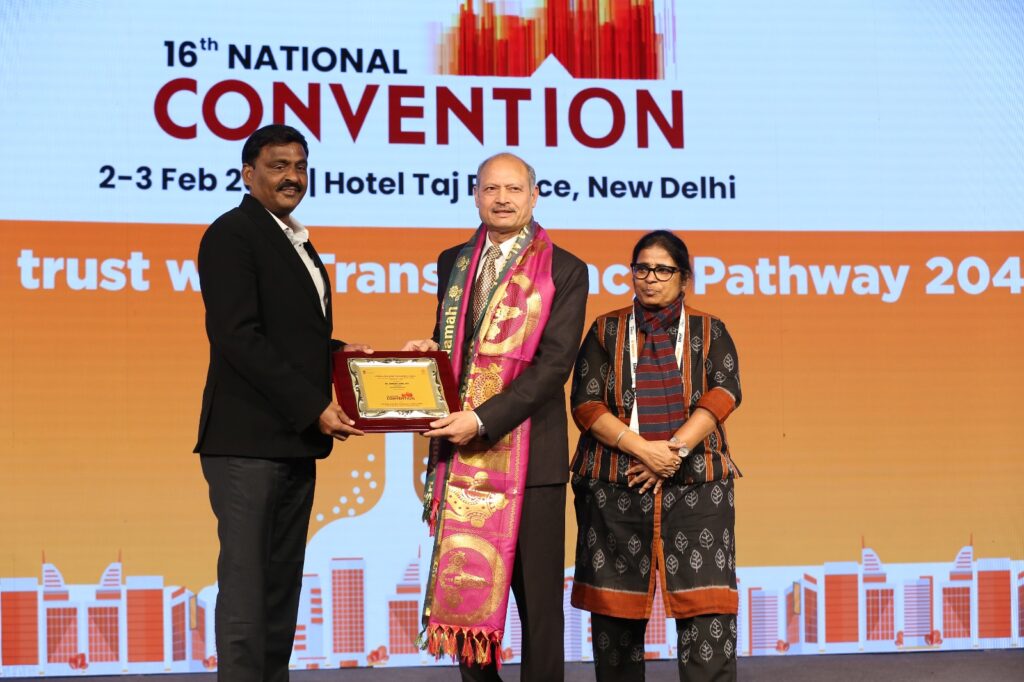
In conversation with, Pankaj Narang, Founder & Director, Blitzkrieg Co.
In this insightful discussion, we delve into the core values shaping the company’s growth, its impactful contributions to community development, innovative marketing, adept handling of industry challenges, and the strategic foresight guiding its trajectory in the ever-evolving real estate landscape.
Can you provide insights into the founding principles of Blitzkrieg Co. and how they have guided the company’s growth and development over the years?
Values, transparency, and trust are the 3 core principles on which Blitzkrieg Co started. These core principles define us and guide us, transparency with our developer partners and customers a trusted relationship, and delivering values for both our developer partners and customers we have been very particular in timing up with developers who have the vision to deliver a quality product and similarly we help our customers to find their right home in our developer partner projects r association which developer is not a short term we are involved from concept to possession hand holding the developer and customer along the way. These principles have helped us to get the entire portfolio of our developer partners and drive 30% plus referral business.
In what ways has Blitzkrieg Co. contributed to the local community or urban development through its real estate projects?
We work with developers who are focused towards the development of community and improvement of micro-markets. However, the values that we bring into our undertakings are tangible and persistent. Like for instance, in Samarth Aura in Bhandup, the sales value we generated was huge. To ensure a good quality concrete road was established around the project (our developer partner made sure this), thereby creating a beneficial impact on our development and the general surrounding infrastructure as well.
Our resources recruiting policies encouraged to achieve their full potential has been a consistent action on our part. Our vision is clear: We grow when our team members grow. This is our collective desire and we must attain it.
Could you share an example of a real estate project where innovative marketing and sales strategies played a crucial role in achieving success?
As the world emerged from the pandemic, we took the opportunity to plan projects tailored to the changing lifestyles of our customers. Adapting to their evolving needs, we implemented the concept of ‘blissful living’ in one of our projects, Samarth Aura in Bhandup. The project features 60 amenities, and our marketing campaign highlighted ’60 Reasons for Blissful Living.’
In another project, our marketing strategy, ‘Rise Above the Ordinary,’ resonated well with the aspirations of the current middle class, proving successful in our Vikhroli project.
We also observed that while customers appreciate the projects, their financial understanding of home buying is still at an early stage in India. To address this, we created extensive and innovative financial offerings to assist customers in realizing their dream homes. These sales strategies have been instrumental in the success of all our projects.
Our sales approach follows a simple strategy, contributing to strong performance in the current market. From pre-sales to sales and post-sales, providing exceptional customer service has been the cornerstone of our strategy. This approach has not only helped us achieve impressive sales numbers but has also generated remarkable referral business, as customers appreciate our assistance in realizing their dream homes
Can you discuss any challenges or obstacles Blitzkrieg co. has encountered in the real estate market and how the company has overcome them?
The most significant challenge facing the real estate industry right now is acquiring the right resources for projects, which is crucial for project success. We have successfully overcome this challenge through our employee-friendly policies, placing people at the core of our business. By providing immense opportunities and assisting our employees in reaching their aspirations, we have seen individuals progress from starting as telecallers to becoming sales champions and closing managers. Our core principle is centered around employee-friendly policies, giving our team the space and trust to grow, and guiding them along the way, aligning with the core values we mentioned above.
What advice would you give to individuals or businesses looking to invest in real estate, considering the current market dynamics and trends?
Real Estate Hi Real Hai – real estate is a tangible asset that you can touch and feel. It has delivered amazing year-on-year returns, making it a continuously growing sector and a key driver for India’s journey to achieving its 5 trillion-dollar economy status.
For individuals or businesses looking to invest in real estate, here are a few crucial points to consider:
1. Due Diligence of Paperwork: With the advent of RERA, due diligence, including approvals and agreements, has become more streamlined. We also conduct our due diligence when partnering with developers.
2. Developer Legacy: Consider the developer’s past projects, delivery timelines, and the quality of construction. Investigate what existing customers say about them.
3. Micro Market Understanding: With evolving technology, one can analyze the transactions in a specific micro-market to make informed decisions about pricing for their dream home.
4. Engage a Reliable Broker: Find a good broker who can help you secure the right deal for your real estate investment.
Can you share your perspective on the importance of branding and brand identity in the real estate industry.
In real estate, having a strong brand and identity is like making a great first impression. It helps your business stand out, builds trust, and makes people remember you in a sea of options. Brand identity includes everything from your logo and colour scheme to the way you communicate and the values you emphasize. it’s about crafting a cohesive and appealing package that makes potential clients remember and choose you over others. In a competitive industry like real estate, a strong brand can be a game-changer, it’s about creating a consistent and positive image that sets you apart.
A positive brand has helped garner higher sale price in same micro market vis a vis competition, hence focussing on building brand should be taken very seriously by developers.
How does Blitzkrieg co. foster a culture of innovation and continuous improvement within the organization to stay competitive in the real estate market?
Blitzkrieg Co fosters innovation and continuous improvement by having sales and marketing advisors operate from project sites, gaining real insights from customer interactions. With a focus on being product-driven, the company emphasizes adapting to evolving needs and changing lifestyles. Flexibility is the key, demonstrated by the swift adoption of virtual tools during the pandemic. Continuous learning is a priority, as sales and marketing advisors stay agile, tech-savvy, and committed to ongoing improvement to remain relevant in the dynamic real estate industry. Every employee has the freedom to provide their inputs. These inputs are welcomed, assessed, and used to drive better business processes.
Looking ahead, what is the vision and long-term goal for Blitzkrieg co. in the evolving real estate landscape.
Our vision is to meet the short-term needs of developers, i.e., the sales of inventories, while concurrently working towards the long-term goal of creating a better brand for our developer partners committed to delivering quality products. We aim to be a one-stop solution for our developer partners and customers, all while staying rooted in our values.



 By – Akash Pharande, Managing Director – Pharande Spaces
By – Akash Pharande, Managing Director – Pharande Spaces

